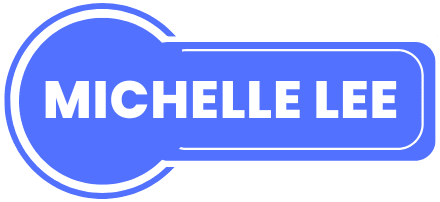Picture this: No CEO tower looming above you. No manager breathing down your neck. No ladder to climb—because there is no ladder.
Sounds dreamy? Or terrifying?
Welcome to the world of decentralized leadership—a radically different way of organizing teams and leading people. Instead of traditional hierarchies, we’re talking about fluid roles, collective decision-making, and self-managed teams.
It’s a little messy. It’s a lot powerful. And it just might be the future of leadership.
Let’s dive deep, real talk style.
Quick Backstory: Where This All Came From
Remember the industrial era’s obsession with top-down management? Command-and-control was king. Workers followed. Managers managed. Everything was about efficiency, uniformity, and control.
But in today’s knowledge economy—where agility, innovation, and adaptability rule—that rigid structure? It’s more like a ball and chain.
Decentralized leadership emerged from movements like:
- Agile methodologies in tech
- Holacracy, made famous by Zappos
- DAO structures (decentralized autonomous organizations) in blockchain communities
- And even open-source software projects, where leadership is distributed by merit, not title
At its core, it’s about trusting people to lead from wherever they are.
But Wait… What Is Decentralized Leadership Exactly?
In plain English?
It’s a leadership model where:
- Power is shared, not hoarded
- Decisions are made closer to the action
- Roles are flexible, not fixed
- Everyone is accountable, not just the person with a title
Think of it like a jazz band, not an orchestra. There’s structure—but also room for improvisation. Everyone’s listening, adapting, stepping up when it’s their turn.
No conductor. Just flow.
True Story: When I Led a Team Without Being a Leader
Years ago, I was on a scrappy product team inside a mid-sized company. No clear boss. No org chart. Just a shared goal: build something amazing.
Every Monday, we set priorities together. If someone was overwhelmed, we shifted things around. If someone had expertise, they led that sprint—no permission needed.
Were there messy moments? Absolutely.
But we delivered fast. People were lit up. I saw junior designers mentoring senior developers. I saw shy team members become facilitators. I saw what happens when people are trusted—and it was magic.
That was my first taste of decentralized leadership. And I’ve been obsessed ever since.
Okay, But… Does It Actually Work?
Yes—and no.
Let’s talk benefits first:
1. Faster Decision-Making (Surprise!)
Ironically, decentralization can speed things up. No bottlenecks. No “Let me ask my manager’s manager.” People closest to the problem solve it—on the spot.
2. Increased Ownership
When there’s no big boss calling the shots, people take real responsibility. It’s not “their” decision—it’s ours. That sense of shared accountability? That’s rare—and powerful.
3. Agility & Adaptability
Markets shift fast. Decentralized teams can pivot without bureaucracy. They’re less like cruise ships and more like a fleet of speedboats.
4. More Empowered, Engaged Humans
Micromanagement kills morale. But autonomy? It lights people up. Decentralized leadership unlocks creativity and self-direction—two things top performers crave.
5. Natural Talent Emerges
When everyone’s invited to lead, hidden leaders rise. Not based on title, tenure, or politics—but action, contribution, and initiative.
But Hold Up… Where’s the Catch?
Yeah, it’s not all sunshine and Slack emojis.
Here are the real challenges:
1. Lack of Clarity Can Kill Momentum
No clear roles? No decision framework? Chaos. Teams need some structure—even if it’s fluid. Think of it as scaffolding, not shackles.
2. Not Everyone’s Ready to Lead
Some folks thrive with freedom. Others freeze. Without coaching, reflection, and support, decentralization can overwhelm more than empower.
3. Accountability Gets Murky
If everyone’s responsible, sometimes no one is. Teams need radical clarity on who owns what—and the guts to call each other in (not out).
4. Communication Has to Be NEXT LEVEL
Decentralization demands high-trust, high-frequency communication. Transparency isn’t optional—it’s oxygen.
So How Do You Make Decentralized Leadership Actually Work?
Glad you asked. Here’s a practical roadmap:
1. Define the Mission—Together
Without a strong “why,” people float. Rally your team around a shared purpose. Not from above—but through collaboration. Buy-in is everything.
2. Create Role Fluidity, Not Role Confusion
Let people take on different hats—but still define responsibilities. A shared doc. A Miro board. Sticky notes. Doesn’t matter. Just make it visible.
3. Use Frameworks Like RACI or Holacracy
These give structure without suffocation:
- RACI = Responsible, Accountable, Consulted, Informed
- Holacracy = Role-based authority, regular governance meetings
Pick what fits your vibe.
4. Normalize Feedback & Reflection
Schedule retros. Do 1:1s without hierarchy. Encourage radical candor. Safe conflict makes decentralization possible.
5. Invest in Emotional Intelligence
This model only works if people can communicate, self-regulate, and own their sht*. Training in active listening, feedback, and boundaries? Mandatory.
6. Let Leadership Be a Behavior, Not a Role
Anyone can lead a project, a meeting, a moment. Encourage micro-leadership. Celebrate it. Model it. Make it cool.
Real-World Examples of Decentralized Leadership
Need some inspo? These companies are walking the walk:
- Zappos: Adopted holacracy to flatten hierarchy
- Valve (yes, the video game company): Famously operates with no traditional bosses
- Haier (China’s home appliance giant): Uses micro-enterprise teams with full autonomy
- GitLab: All-remote with transparent, decentralized processes
These orgs prove that decentralization can scale—if you’re willing to trust the process (and your people).
TL;DR – Why Decentralized Leadership is the Move
| Thing | Hierarchical Model | Decentralized Model |
|---|---|---|
| Power | Top-down | Shared & distributed |
| Decisions | Slow, approval-heavy | Fast, local |
| Engagement | Varies | High (if done right) |
| Risk | Low (controlled) | High (but creative) |
| Innovation | Limited | Explosive potential |
Final Word: Decentralized Doesn’t Mean Disorganized
This isn’t a free-for-all. This is a reimagination of leadership. A shift from control to co-creation. From command to collaboration.
It takes:
- Bravery
- Clarity
- Communication
- And a little chaos-tolerance
But the reward? Teams that lead themselves. Cultures that feel alive. Workplaces where anyone can rise—not because they were promoted, but because they showed up.
That’s not just leadership. That’s evolution.




